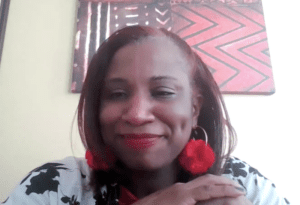Who is a member?
Our members are the local governments of Massachusetts and their elected and appointed leadership.

Sharon Select Board Chair Kiana Pierre-Louis shares practical tips for fostering constructive dialogue and overcoming volatile feelings in challenging times during a free MMA webinar.
An MMA webinar today shared practical tips for fostering constructive dialogue and overcoming volatile feelings in challenging times.
Sharon Select Board Chair Kiana Pierre-Louis, who’s also the assistant dean of Diversity, Equity and Inclusion at Northeastern University, began by discussing environmental and personal barriers to effective communication. Environmental barriers may include time and space, organizational norms, or status dynamics. Personal barriers may include biases, different personality types, and unacknowledged differences in communication preferences.
Conflict can arise from these barriers, creating a divide between people or groups. When this occurs, it’s essential to embrace disagreement without making it personal, taking the matter out of context, or negatively characterizing the person in the disagreement.
During conflict, the amygdala area of the brain processes fearful and threatening stimuli, activating a fear-related behavioral response. Pierre-Louis explained how “triggers” can also activate the amygdala, and the body’s fight-or-flight response, even if there is no physical threat present.
A trigger can be any sensory reminder of a traumatic event: a sound, sight, smell, physical sensation, or even a time of day or season, Pierre-Louis said. Triggers vary widely from person to person and can be internal or external, but she emphasized there is a difference between being triggered and being uncomfortable.
When someone is triggered, it is impossible to have a productive dialogue. Thus, it’s important to understand how your feelings may translate into judgments, attributions or characterizations.
Pierre-Louis reviewed how understanding yourself, and putting aside your internal dialogue, can build the groundwork for effective communication. When engaging in difficult dialogue, it’s essential to note your volume and tone of voice, body language and eye contact, and physical distance.
“How you present yourself should align with the message you are trying to convey,” she said.
Pierre-Louis moderated a brief question and answer session, which addressed inquiries about dealing with public anger and involving a mediator in difficult conversations.
• Conflict Conversations: Empathetic Dialogue in Volatile Times presentation (2M PDF)